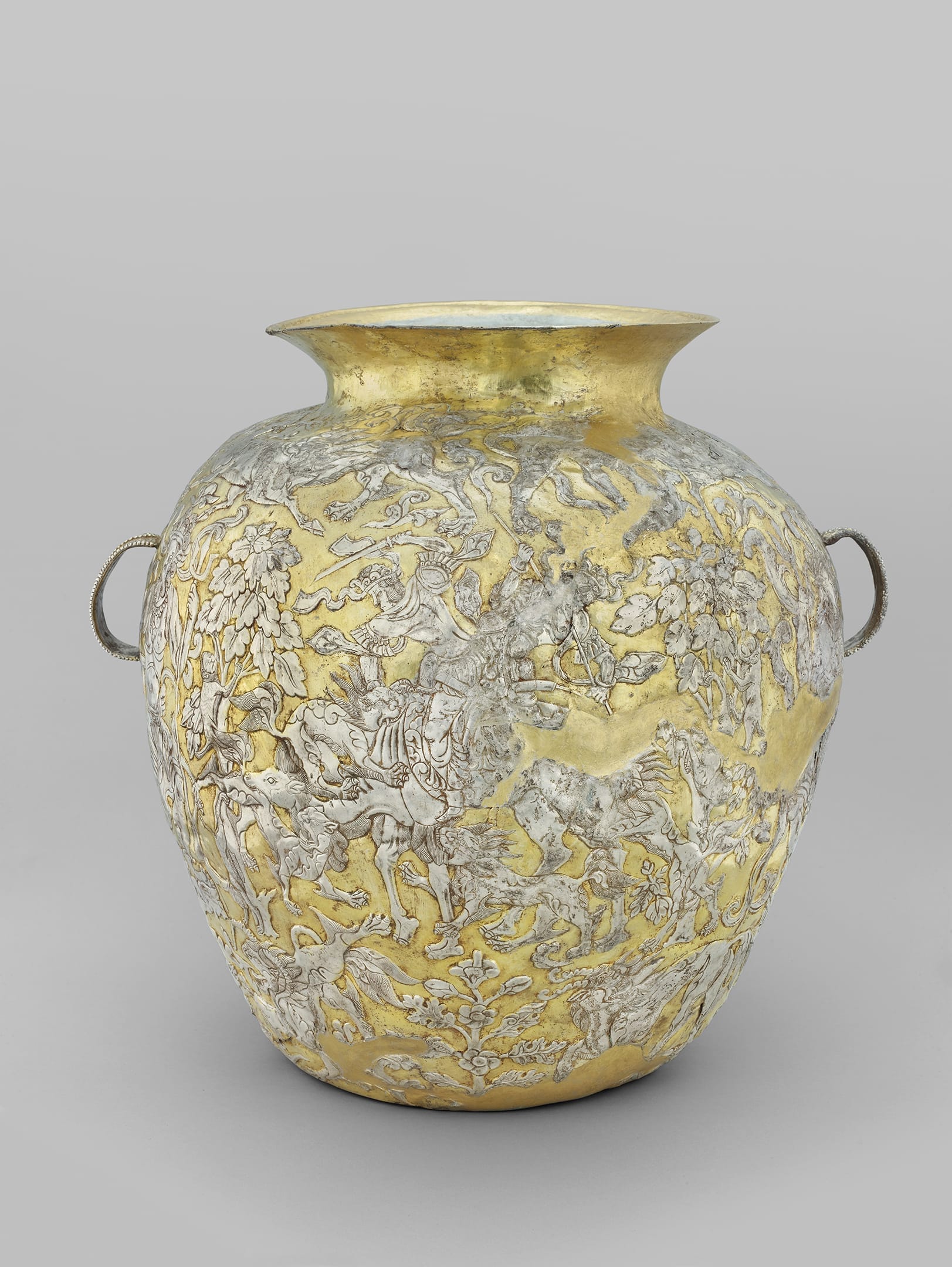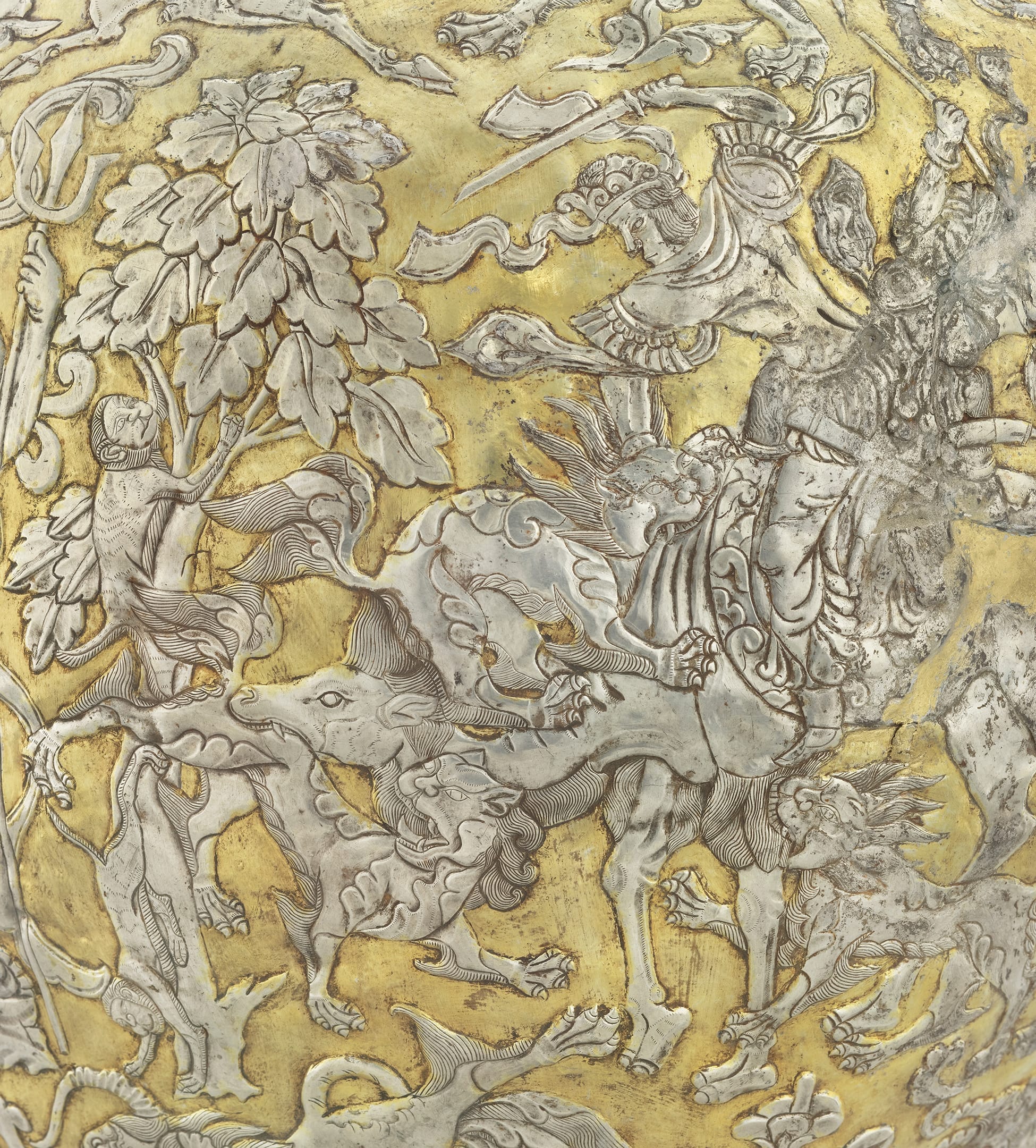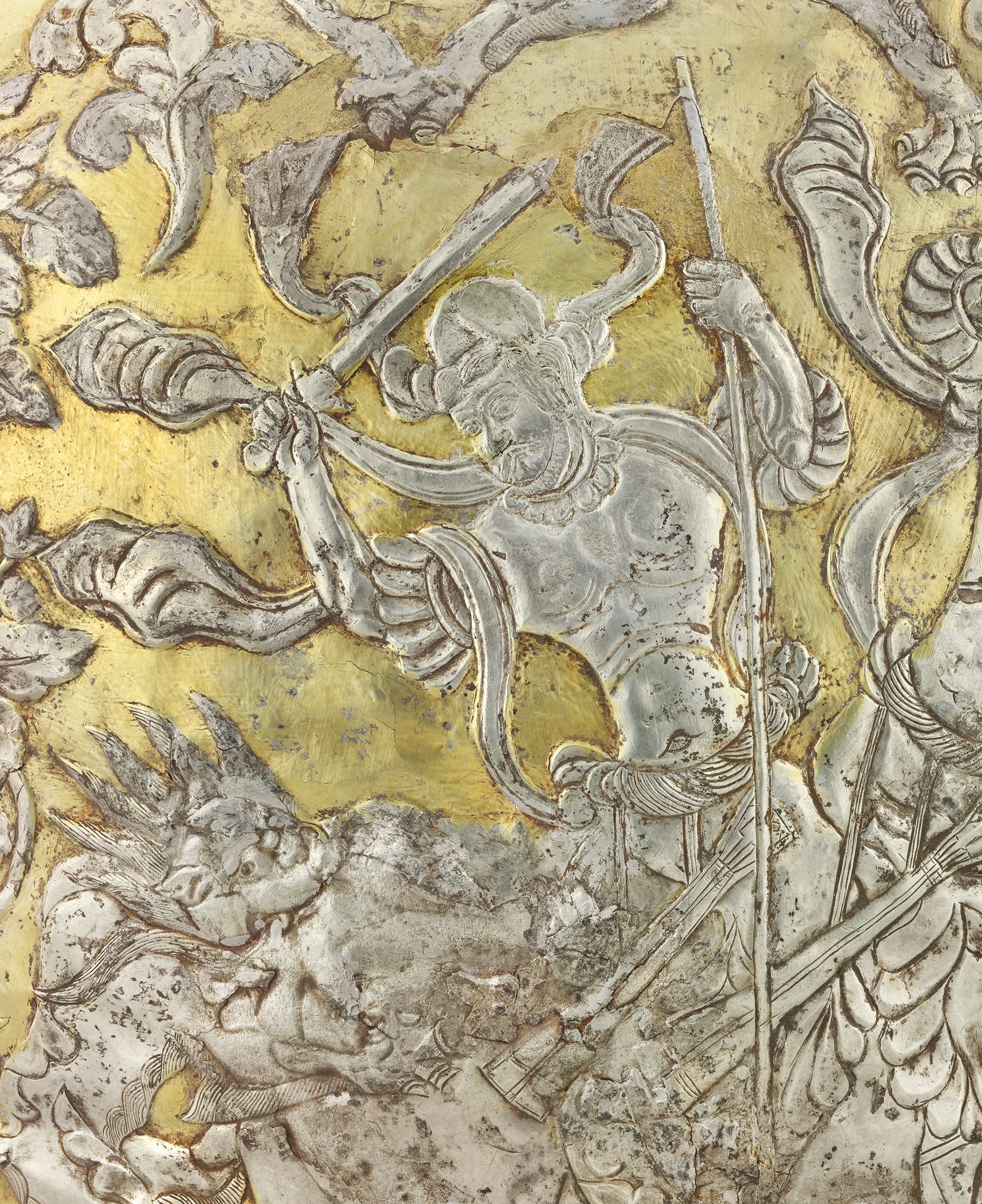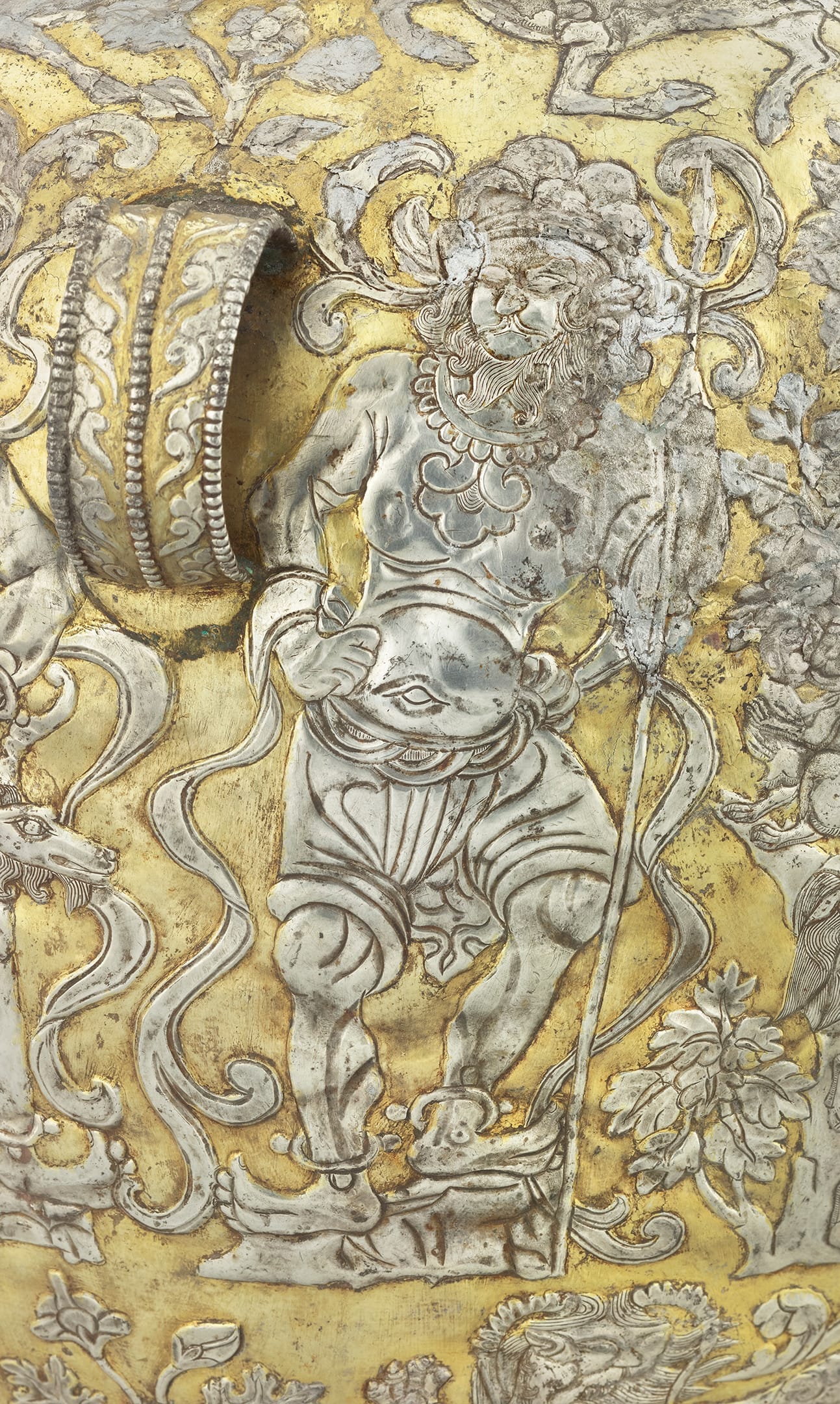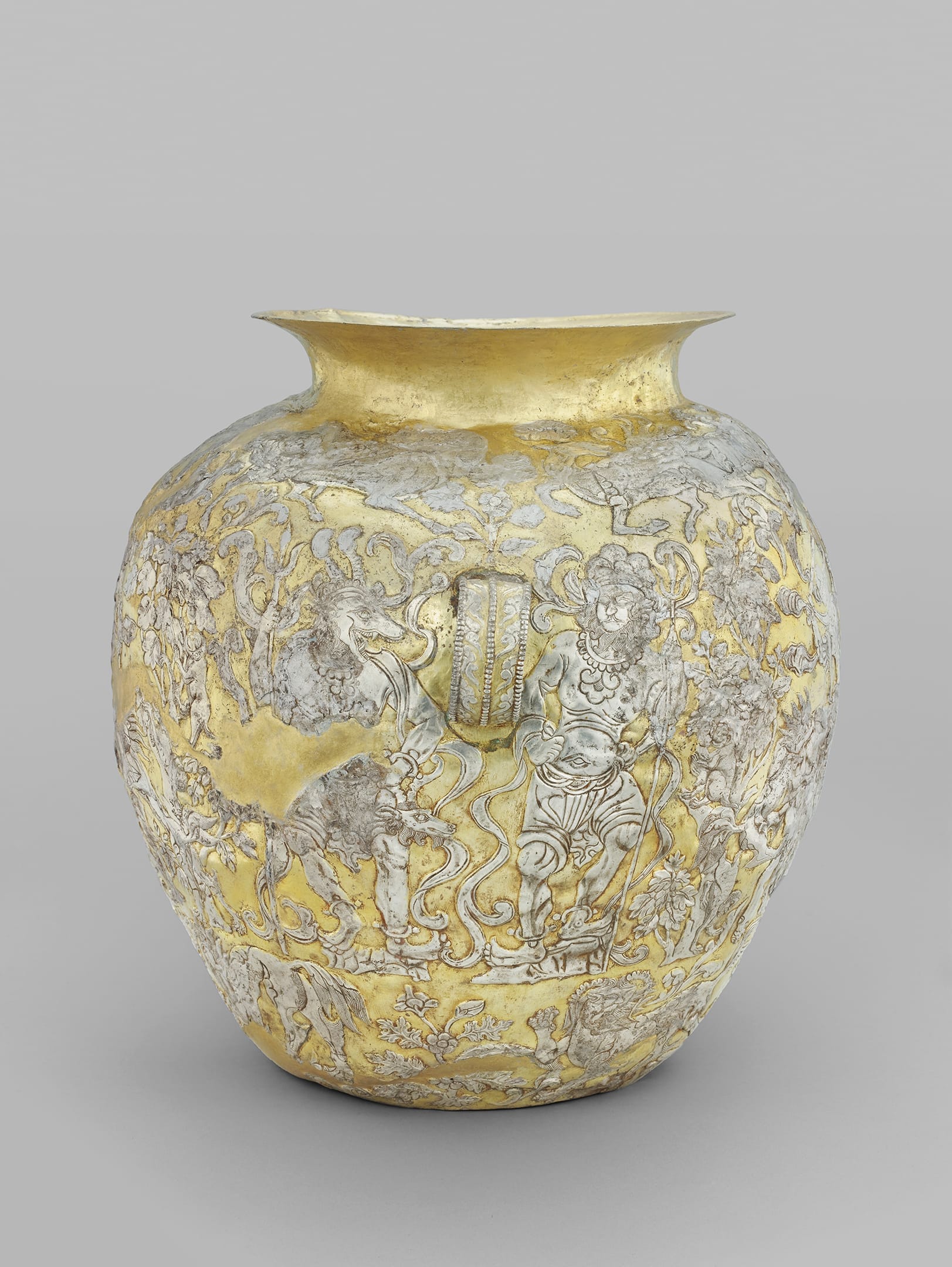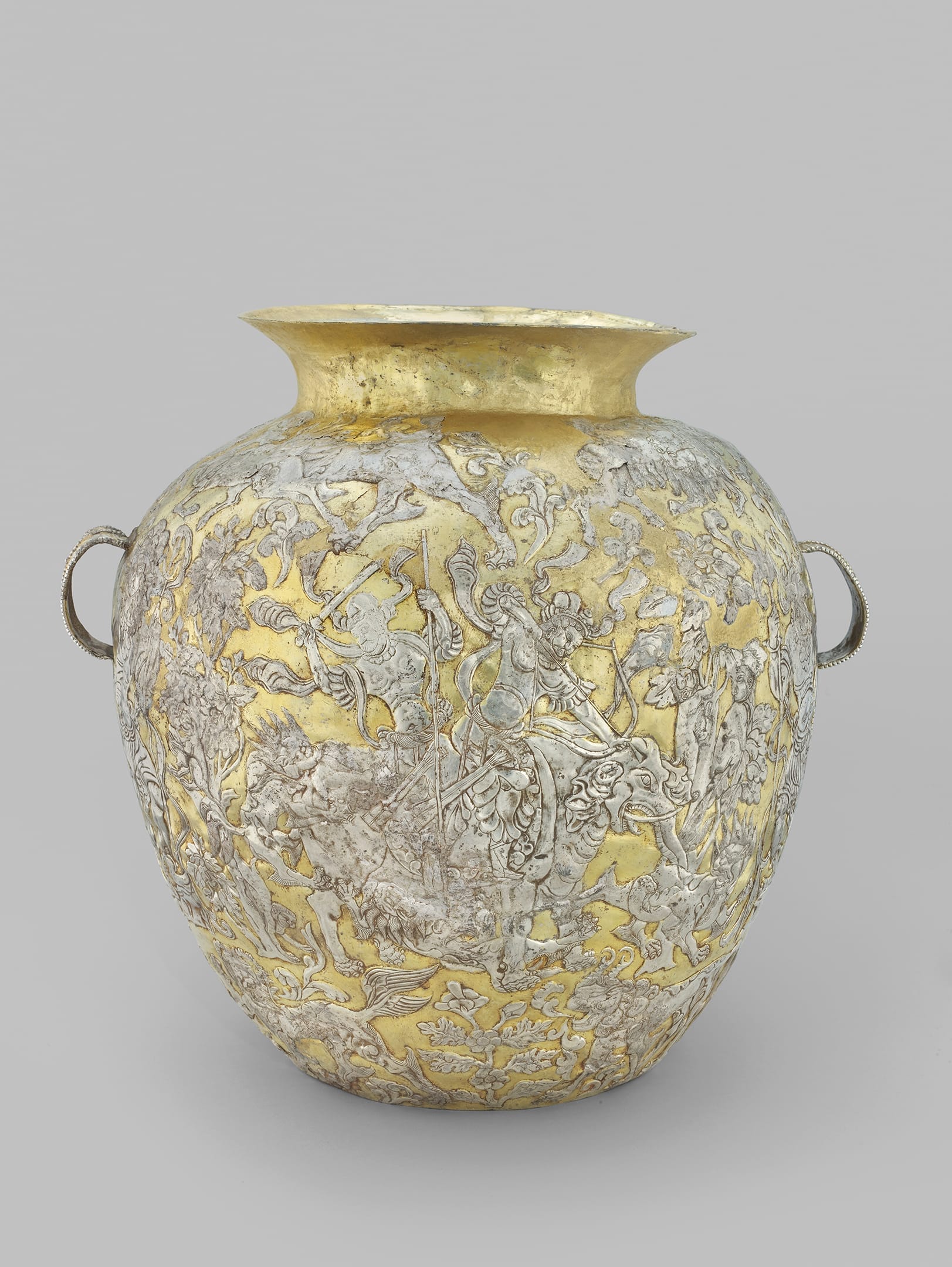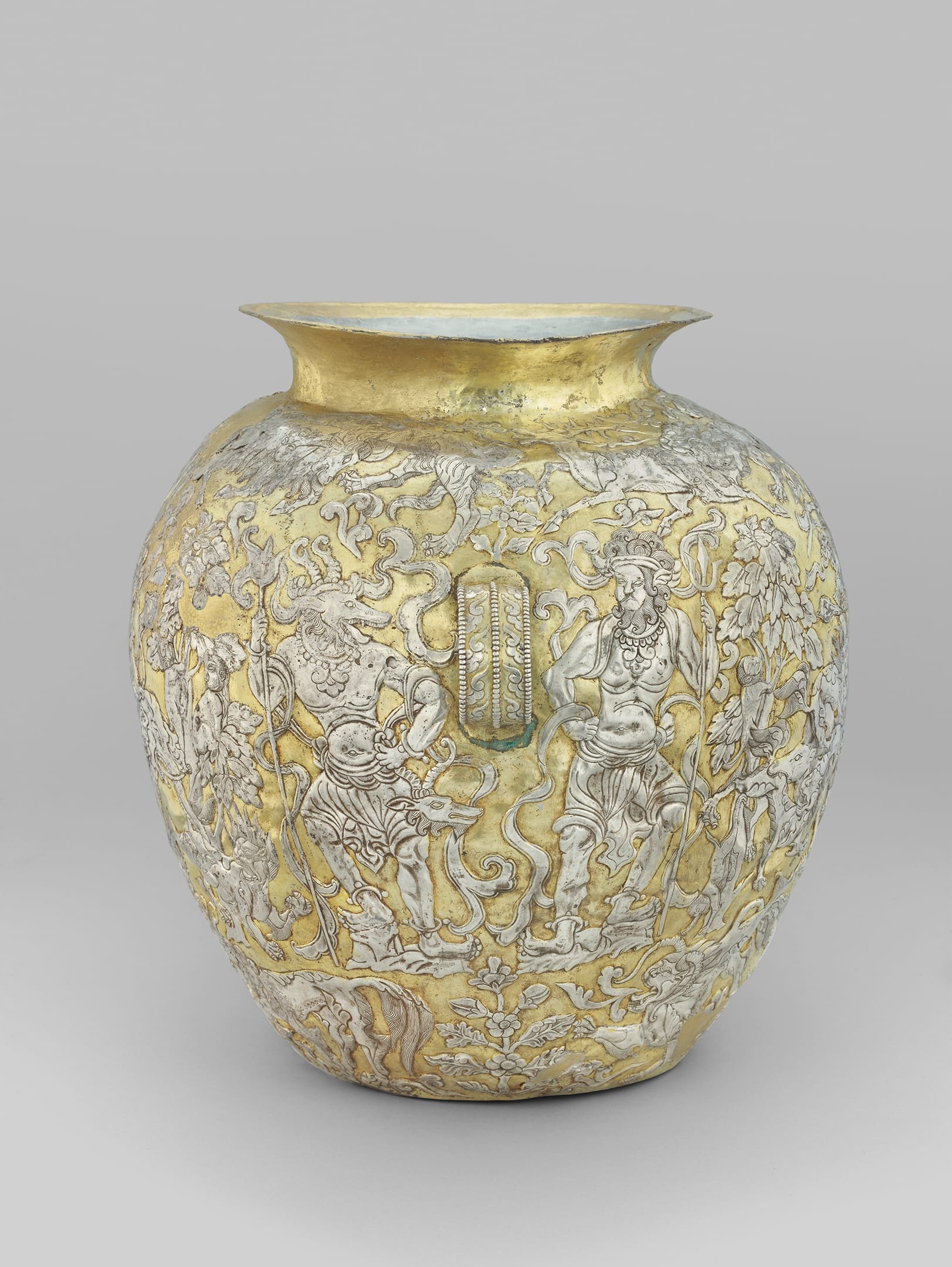This wide-necked, egg-shaped vessel of gilded silver with a flat base and two small handles belongs to a very small group of Central Asian or Tibetan works probably produced by craftsmen of the Persian-speaking Sogdian people settled on the trade routes of Central Asia. Its quality clearly indicates an aristocratic context, perhaps as part of the grave goods in a royal Tibetan tomb. Its rich iconography borrows from the syncretic religious universe peculiar to this area during the 1st millennium CE.
